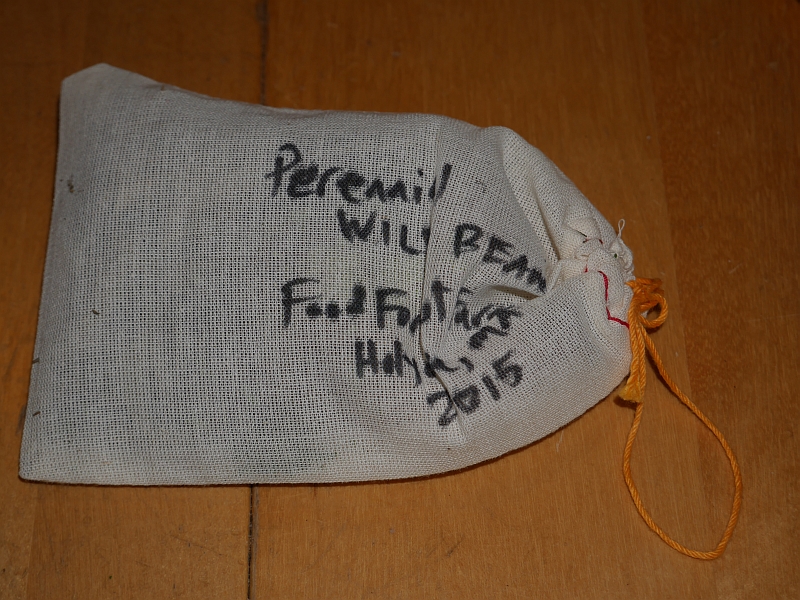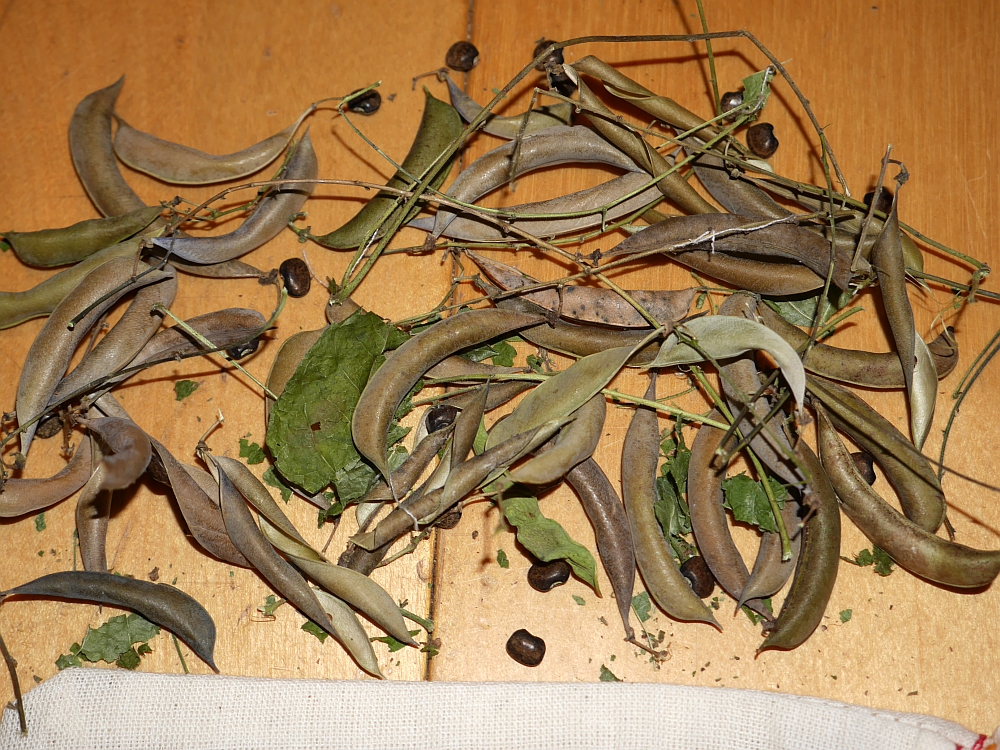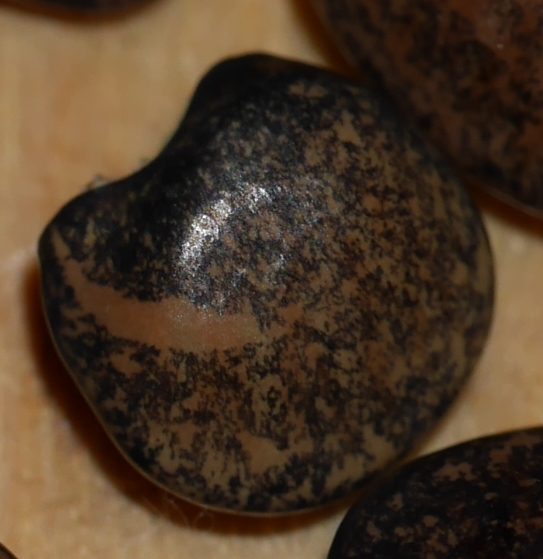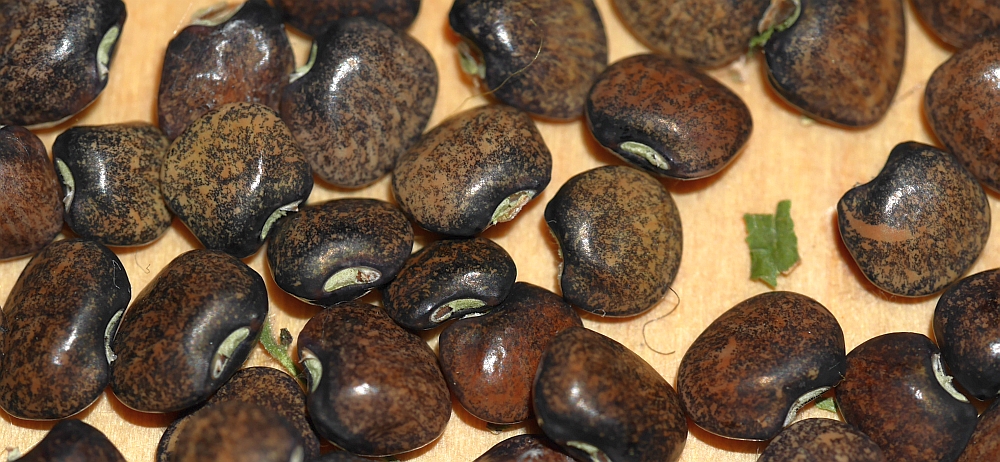I’m a bit late trying Phaseolus polystachios, Thicket Bean or Wild Kidney Bean, a North American climbing perennial bean that has been discussed in permaculture breeding circles over the last few years, notably on the following old Homegrown Goodness forum threads
http://alanbishop.proboards.com/thread/7692/breeding-perennial-wild-phaseolus-polystachios
http://alanbishop.proboards.com/thread/4485 (sidetracking into Hablitzia and skirret)
Jonathan Bates, who is part of the Hablitzia story in my book, of Food Forest Farm, and one of the two “geeks” in Paradise Lot with Eric Toensmeier kindly sent me seed in exchange for Aster scaber and Ligularia fischeri! Jonathan and Eric Toensmeier’s plants are now about 6 years old and they have been advocating a breeding project for some time….as have pioneers Nicolas Moreau, Rob Wagner, Telsing Andrews, Alison Tindale and Chris Homanics! It would be great to have a perennial bean (although a breeding project on Siberian Pea Vine might be a better option for my area). It has also been suggested that crossing with runner bean (P. coccineus) might be possible. Although runner bean is perennial, it’s not easy to overwinter in colder climates (has anyone succeeded?).

The seeds are so far rather small. Eric describes the plant as “liking partial shade and a big shrub or trellis to climb on – it can grow to 9-12′ high by year 2 or 3”. There’s also a thread discussing this on the Plant Breeding for Permaculture forum.
Eric: do you know the provenance of your plants? It grows in the wild from Florida as far north as Michigan (Great Lakes) I believe.




The pods look large for a wild species. The fact they don’t tend to open is an indication that people tryed to domesticate it in the past. The most likely cultivated species to cross with it isn’t P. coccineus but P. lunatus, which is remote from P. vulgaris and P. coccineus, which are more likely to cross each other than any other two cultivated species. You’ll have a 7% rate of pollination success with P. lunatus as a female, it seems. It’s a shame it’s such a tropical species. If I were you, I’d try with Dixie Speckled first, because its dwarf. I managed to harvest it in October in NE France.
Thanks, Julien :) I really don’t believe this species will be hardy here, but if you don’t try you don’t know!
Hi how did these work out for you?
Would you be prepared to sell/ swap a few of the beans? I’m in the UK.
I have perennial wheat, or Oca to swap?
I had two plants which grew very slowly, one died, one hopefully still alive…have just sown the other two seeds I had, so sorry I can’t help :(
Sam, if you’re interested I could likely send you seeds in the fall. Mine are just setting flowers now. If all goes well I will have a large seed harvest. bgmartin at metrocast dot net
Wow I didn’t know anyone had the cultivated kind. I’d love to grow some. My email is. nlogwc@mail.missouri.edu please email me if you’d like to sell me some, your price.
Sorry, it’s never flowered for me, so no seeds yet!